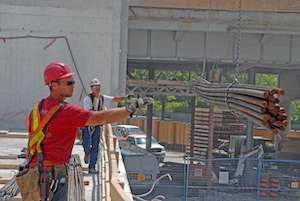How to prepare for the post-COVID-19 world of construction
Last week marked one month since several provincial governments declared varying degrees of states of emergency in an effort to contain the spread of COVID-19. Many governments across Canada extended those states of emergency, and the federal government has suggested that it will be several weeks before emergency measures can safely be lifted.
 Pursuant to various orders promulgated under the authority of the Emergency Management and Civil Protection Act (EMCPA), most industries in Ontario have been impacted either by being required to close or at minimum altering operations. Although most construction activity in Ontario was permitted to continue initially, revised lists published on April 3, 2020 and on April 10, 2020 narrowed the projects that were deemed essential. Despite this, a significant amount of construction activity continues today although with measures to ensure social distancing and the safety of personnel on site. Outside Ontario, each of the provinces and territories have implemented similar measures to protect the health and safety of construction industry stakeholders.
Pursuant to various orders promulgated under the authority of the Emergency Management and Civil Protection Act (EMCPA), most industries in Ontario have been impacted either by being required to close or at minimum altering operations. Although most construction activity in Ontario was permitted to continue initially, revised lists published on April 3, 2020 and on April 10, 2020 narrowed the projects that were deemed essential. Despite this, a significant amount of construction activity continues today although with measures to ensure social distancing and the safety of personnel on site. Outside Ontario, each of the provinces and territories have implemented similar measures to protect the health and safety of construction industry stakeholders.
There is no question that all participants in the construction industry have experienced, and will continue to experience, impacts on their operations because of COVID-19. These impacts include, among others, schedule delays, workforce disruptions, equipment and supply chain disruptions, reduced productivity due to on site health and safety measures (e.g., social distancing, staggering of work, enhanced sanitary measures, etc.), permit delays or restrictions on new permits, and financing restrictions or cash flow shortages.
These circumstances may trigger requirements under construction contracts to provide delay notices, enforce force majeure clauses or in some cases claim that the contact has been frustrated. Such steps where summarized in our previous bulletins (see, in particular, our publications dated March 24, 2020 - Can I Safely Release Holdback in Ontario After March 16 2020; April 3, 2020 - The Impact of COVID-19 on the Construction Industry A Reference Guide to the Changed Landscape; April 8, 2020 - Project Management Amid COVID-19 The Triage; and April 10, 2020 - Show Me the Money Government of Ontario to Amend Emergency Order to Allow Release of Holdbacks).
Despite significant ongoing challenges, projects that were halted will eventually resume, projects that have been slowed will return to more regular schedules and projects that were to start but did not will mobilize. The construction industry and its participants should anticipate an eventual return to work—but this return will be to a new normal.
No one can predict what this new normal will look like, however, the end of the pandemic will undoubtedly lead to a significant increase in claims for delays or increased costs because of the COVID-19 outbreak, lead to changes in scheduling needs and reinforce the need to coordinate and cooperate at all levels of the construction pyramid.
Below we offer a few highlights of what we believe all construction industry stakeholders should expect, and tips to deal with the new normal in construction.
Claims for time and money
Construction industry stakeholders will continue to advance or respond to claims for time, money, or both resulting from the pandemic. A party’s entitlement to time or money will be rooted in the construction contract, and each contract will need to be carefully analyzed to determine a party’s specific entitlement.
The onus of proof for these time and money claims will rests with the contractor, and that onus includes proof of cause and effect. It is not sufficient to simply cite the pandemic and expect relief without demonstrating an actual impact sustained by the contractor that is directly linked to the pandemic. The contractor also has a legal obligation to mitigate. It is not enough to sit back, let the costs run, and then expect recovery. The contractor is obliged to take the reasonable steps necessary to mitigate the adverse consequences of the pandemic upon the project, which steps will vary depending on the circumstances of the project.
Scheduling
It is without any doubt that the pandemic and underlying measures implemented by the various authorities have impacted the schedule of most construction projects globally.
Once the pandemic ends, it will be important for all project stakeholders to evaluate the impact of the delay on all aspects of the project, including an evaluation of the baseline schedule, critical path delays, and impacts on near critical activities.
Owners will want to enforce the contract’s scheduling requirements and carefully review any schedule updates to anticipate impacts to the schedule and mitigate where possible. Schedule updates often highlight critical information, which will affect all aspects of the project, including supply chain delays. Ensuring proper adherence to scheduling requirements under the terms of the contact will allow for re-sequencing of activities or re-distribution of the workforce, when and where possible. Workforce coordination, including staggering of work, will likely continue even when projects resume as physical distancing requirements are likely to remain in place for the foreseeable future.
A careful review of the project scheduling will also allow parties to anticipate and mitigate where possible scheduling impacts on upcoming projects.
Coordination and cooperation
Just as making sure that the contractual scheduling requirements are adhered to, the implied or express terms of coordination and cooperation will need to be followed. The pandemic has demonstrated that any projections, modeling or best laid plans require constant attention, reevaluation and adjustment. All parties to a construction project will need to cooperatively work together for the common interest of completing the project.
The better strategy for parties is to treat this coordination and cooperation at least as importantly as strict insistence upon one’s rights and remedies under the contract. Should a dispute end up before a judge or arbitrator, consider the likely attitude that will inform his or her approach, amid the highly unusual and pervasive disruption of the pandemic, to interpreting what may be ambiguous contractual terms or assessments as to the reasonableness of positions taken. A cooperative claimant, having demonstrated an empathetic approach to the circumstances, will do better.
Parties should establish and adhere to strict communication protocols with all participants involved in a project including insurers, lenders, landlords and suppliers. These efforts will likely bear fruit, even in the face of inevitable disputes.
Communication will be key with bonding and surety companies and insurance providers. Whether coverage will be available for COVID-19 will be dependent on the terms of the specific policy, however, proper and timely notice is required.
Document
It will be important to accurately document the cause and effect of each event in order to substantiate a party’s position regarding an entitlement. This applies in all circumstances, including efforts undertaken to minimize the impacts of the pandemic – the key will be to document everything.
Takeaways
This pandemic was not foreseeable and unfortunately, its duration and fallout remain uncertain. What is certain is that we are transitioning to a new normal. Being prepared for this will be essential to managing the outcome and minimizing negative impacts.
This article was written by Jason J. Annibale, Geza R. Banfai, Jamieson D. Virgin and Patrick A. Thompson of McMillan LLP. It appears in its original format on the McMillan LLP website.








